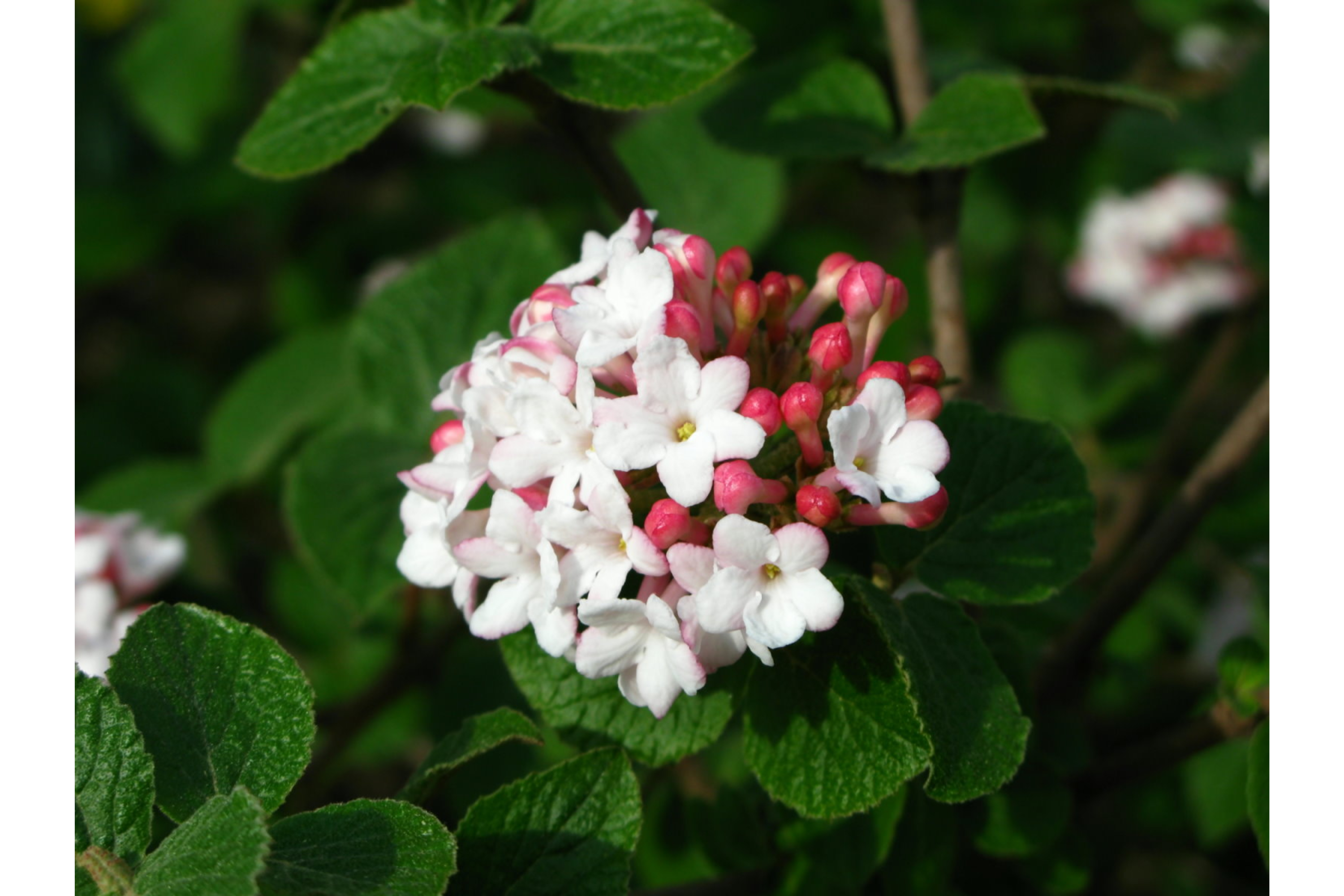Korean spice viburnum
(Viburnum carlesii)

Description
Viburnum carlesii, the arrowwood or Korean spice viburnum, is a species of flowering plant in the family Adoxaceae (formerly Caprifoliaceae), native to Korea and Japan (Tsushima Island) and naturalised in Ohio, USA. Growing to 2 m (7 ft) tall and broad, it is a bushy deciduous shrub with oval leaves which are copper-coloured when young. Round clusters of red buds open to strongly scented, pale pink flowers in late spring. These are followed in late summer by oval red fruits ripening to black in autumn. The Latin specific epithet carlesii refers to William Richard Carles (1848–1929), a British plant collector in Korea. The cultivars 'Aurora' and ‘Diana’ have gained the Royal Horticultural Society's Award of Garden Merit. Viburnum is a genus of about 150–175 species of flowering plants in the moschatel family Adoxaceae. Its current classification is based on molecular phylogeny. It was previously included in the honeysuckle family Caprifoliaceae. The member species are evergreen or deciduous shrubs or (in a few cases) small trees native throughout the temperate Northern Hemisphere, with a few species extending into tropical montane regions in South America and southeast Asia. In Africa, the genus is confined to the Atlas Mountains. The generic name Viburnum originated in Latin, where it referred to V. lantana. The leaves are opposite, simple, and entire, toothed or lobed; cool temperate species are deciduous, while most of the warm temperate species are evergreen. Some species are densely hairy on the shoots and leaves, with star-shaped hairs. The flowers are produced in corymbs 5–15 cm across, each flower white to cream or pink, small, 3–5 mm across, with five petals, strongly fragrant in some species. The gynoecium has three connate carpels with the nectary on top of the gynoecium. Some species also have a fringe of large, showy sterile flowers around the perimeter of the corymb to act as a pollinator target. The fruit is a spherical, oval, or somewhat flattened drupe, red to purple, blue, or black, and containing a single seed; some are edible for humans, but many others are mildly poisonous. The leaves are eaten by the larvae of many Lepidoptera species. Birds eat the berries of Viburnum obovatum (also called Walter Viburnum after Thomas Walter).
Taxonomic tree:







